How would i go about connecting indicator LEDs to the serial lines from my MCU(a Parallax Propeller) to a MAX3232 and the chip select line for a SD card? I want the LEDs to light up when the lines are low, as all the signals are active-low. Everything is running at 3.3V, but a 5V supply is available. The SD select line is pulled to 3.3v by a 10k resistor (this is according to the documentation of the SD driver), the serial is just straight from MCU to MAX3232 (should i pullup TX aswell? It could be configured as input by software when its not used)
Im doubting the viability of connecting them directly from the lines to 5v or 3v, as they might be running at 100's of Khz and i have heard the MAX3232 isn't exactly good at running lots of current through its I/O lines (the datasheet doesn't seem to say anything about that).
If my worries are justified, i would prefer a solution with through hole components. Also, if possible, i would like to run the LEDs off the 5V supply to reduce load on the 3.3v regulator and use posssibly use LEDs with forward voltages close to or higher than 3.3v.


